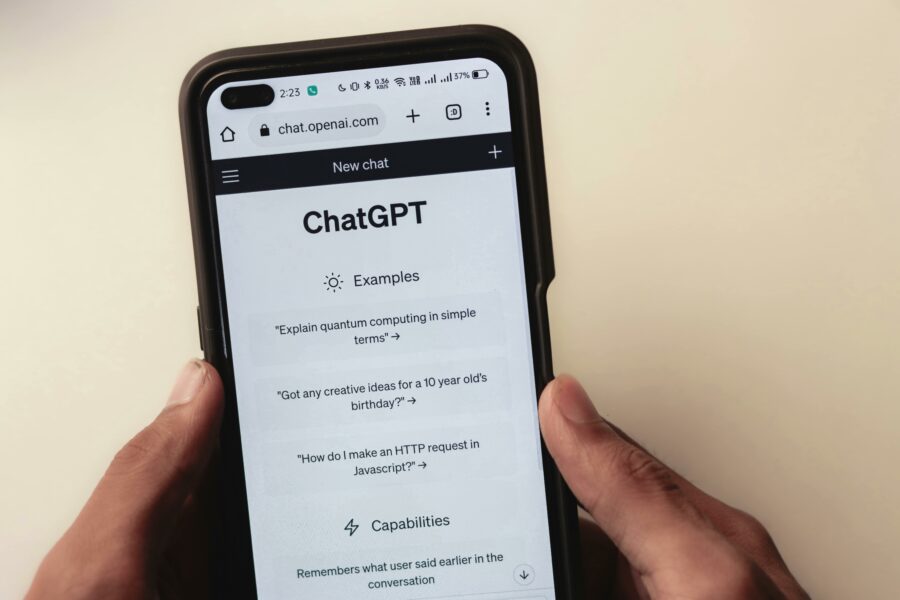It’s a tale as old as time — today’s destination marketers are constantly being asked to do more with less. As you’re looking for ways to maximize effectiveness and productivity (while also juggling tighter budgets and less resources), AI can be a crucial tool in your arsenal.
With AI, DMOs are empowered to automate repetitive work, identify patterns from huge swathes of data, and create a more seamless digital experience in a way that was previously reserved for big-budget organizations.
In recent years, the role of AI in the tourism industry has been rising, with no signs of slowing down. A global survey forecasted that the share of travel companies’ revenue that was influenced by AI would hit 32% this year.
But with the (frankly overwhelming) number of AI tools, it’s not always easy to hone in on AI processes that will work for your DMO. Not only that, but understanding the nuances of using AI is crucial to creating value from this new and ever-changing technology. Here are five things every DMO should know about AI and how to use it effectively.
1. Understand the landscape
Right now, there’s a tidal wave of AI products and tools for DMOs to consider—with more being added every single day. These tools offer a wide range of capabilities, including machine learning, natural language processing, image recognition and creation, and beyond. Plus, many of these systems are now multi-modal, meaning they can see, hear, and speak.

Here’s a breakdown of some of the heavy hitters in the AI space (at least for the next 15 minutes).
- One of the biggest names in AI right now is OpenAI’s ChatGPT. This language AI model generates human-like text based on a given prompt. It’s a great tool for generating copy, analyzing data, retrieving information, and more. ChatGPT is trained on a predefined data set of internet and book text through April 2023 and can perform real-time searches with Bing.
- Formerly known as Bard, Gemini is Google’s AI tool that has many of the same capabilities as ChatGPT. It can create text, answer questions, translate to different languages, and more. Gemini can pull information directly from the internet in real time, similar to a Google search.
Other text-based AI tools with similar functionalities include Microsoft’s Azure AI and IBM’s Watson. There are also AI image generators like DALL-E, MUSE AI from Midjourney, and Bing Image Creator powered by DALL-E. You’ll also start seeing AI technology being introduced to platforms you already use, like Google Ads.
Finally, AI features are being integrated into consumer-facing tools—TripAdvisor’s itinerary builder, the KAYAK plug-in on ChatGPT, Airbnb’s AI acquisitions, and Gemini’s integration into Google Flights just to name a few. Staying on top of these developments will be crucial to having a full understanding of the typical user journey of today’s travelers.
2. Become a prompt expert
In the world of AI, prompts are an art form. Without the right prompts, AI is like a genie with amnesia — it has the power to give you what you need, but it’s not really sure who it is or what it’s doing here.

First, what is a prompt? Prompts are the instructions or questions you input into an AI tool, like “plan a weekend itinerary in Madrid” or “what’s the best time to travel to New Mexico.” But when it comes to getting more sophisticated outputs, you’ll need to move beyond simple commands.
The quality of your results will depend significantly on the quality of your prompts. A good prompt will be precise, detailed, and provide context on the task you would like the AI to perform and the output you’d like to receive.
A good prompt will include the following:
- Tell the AI who it is. Tell the AI how it should be thinking, whether that’s like you (“you’re a destination marketing professional with 10 years of experience”) or a persona (“you’re a Gen Z traveler looking for a vacation destination”). The more specific, the better.
- Provide context. Give details on relevant background information, just as you would for a new employee. If possible, you can even upload supporting documentation or provide website links for the AI to scan. Examples of past work can also be helpful.
- Describe your desired output. You need to let the AI know how to format its response, whether you want a bulleted list, table, email draft, blog post, haiku, etc. Including additional details such as word count and tone can also be helpful.
If you’re ready to become a pro prompt writer, the simple exercise below is a great way to start experimenting with prompt writing and learning how to get more precise.
I want you to become my Prompt engineer. Your goal is to help me craft the best possible prompt for my needs. The prompt will be used by you, ChatGPT. You will follow the following process:
1. Your first response will be to ask me what the prompt should be about. I will provide my answer, but we will need to improve it through continual iterations by going through the next steps.
2. Based on my input, you will generate 2 sections, a) Revised prompt (provide your rewritten prompt, it should be clear, concise, and easily understood by you), b) Questions (ask any relevant questions pertaining to what additional information is needed from me to improve the prompt).
3. We will continue this iterative process with me providing additional information to you and you updating the prompt in the Revised prompt section until I say we are done.
3. Be ready to fact-check
Today’s popular AI platforms promise to take care of the heavy lifting when it comes to generating content or deriving insights. But it’s important to remember that these tools are a long way from perfect.

While most AI models are trained on huge amounts of data, they aren’t always able to tap into the most recent information. This is especially pertinent for DMOs, as AI tools aren’t always equipped to keep pace with the ever-changing landscapes at your destination.
That means the content or data your favorite AI provides so confidently might be out of date, incorrect, or sometimes completely fabricated.
Case in point: When we asked Gemini recently to provide restaurant recommendations in Chicago, it spit out a list that included a spot that’s been closed for three years—and two places that were entirely made up.

These types of AI ‘hallucinations’ will get less common as the models get smarter and more updated. But until then, it’s crucial to take all of your AI outputs with a big grain of salt. No matter why you’re using AI, it’s important that your process includes human fact-checking to strike the right balance between AI efficiency and human accuracy.
4. Establish your own guidelines
The current AI landscape is a bit like the wild west. Its popularity and use cases are running rampant, but there are still lots of unanswered questions around data privacy, ethical considerations, and ownership.
Before implementing AI on an organizational level, your DMO needs to create a well-thought-out AI strategy and guidelines.
- How does your organization use AI and its outputs?
- How will you incorporate human oversight into your AI processes?
- How will you handle data security and privacy relating to AI?
- How will you mitigate the potential bias of AI?
- How will you measure the effectiveness of your AI initiatives?
Another nebulous area to consider is the ethics of AI image generation. While AI tools give you the power to create and edit imagery with ease, it’s not a power that you should wield unchecked.
For instance, would you change the background of an image to depict nicer weather at your destination? What about changing a person’s age or race to increase the appearance of diversity? As you can see, it’s easy to get into murky territory without a defined set of AI guidelines.
Your AI standards should strive for transparency, accuracy, privacy, and most importantly, align with your organization’s goals and values.
5. Know where to implement
It may seem like AI can do everything, but that doesn’t mean you should use it everywhere. It’s important to be strategic when identifying the areas to implement AI in your destination marketing.
- Research: AI is able to retrieve information for a variety of different sources, making it helpful for finding relevant facts and statistics. Just make sure to ask it to cite all its sources.
- Brainstorming: With the right context, AI can be a helpful starting point during the ideation process and can quickly generate options for taglines, headlines, and more.
- Content ideation: If you’re feeling writer’s block, AI can be a great tool for proofreading, outlining and formatting content, and generating content ideas.
- Data analysis: Instead of wading through hundreds of data points yourself, you can use AI to dive into your data to identify visitor trends, forecast travel patterns, or identify your most engaging content.

Another area where AI is well-suited is chatbot development. Integrating the latest AI technology into your destination’s chatbot could significantly enhance the user experience, serving up more useful content and a more personalized experience.
“As we strategically implement AI today, with a focus on enhancing research, content creation, and data analysis, we’re laying the groundwork for a future where AI not only meets but exceeds traveler expectations,” says Envisionit’s Technology Director Chris Van Meter. “The potential of AI to create personalized, immersive experiences is just beginning to unfold, promising a future where every interaction is tailored to inspire discovery and connect travelers with destinations in unprecedented ways.”
The bottom line: AI offers immense potential for DMOs, but like any tool, it’s all about how you use it. Being strategic about your destination’s use of AI can help save time, maximize existing resources, and drive better results for your destinations. But accomplishing this will require understanding how the tech works, mastering the use of prompts, creating solid processes that protect your DMO while allowing you to make the most out of AI.
Learn more about how Envisionit and Unchained can help accelerate and optimize your organization’s AI adoption.

This article’s image was generated using AI with the prompt “illustrate the idea of destination marketing in a paper craft style”













